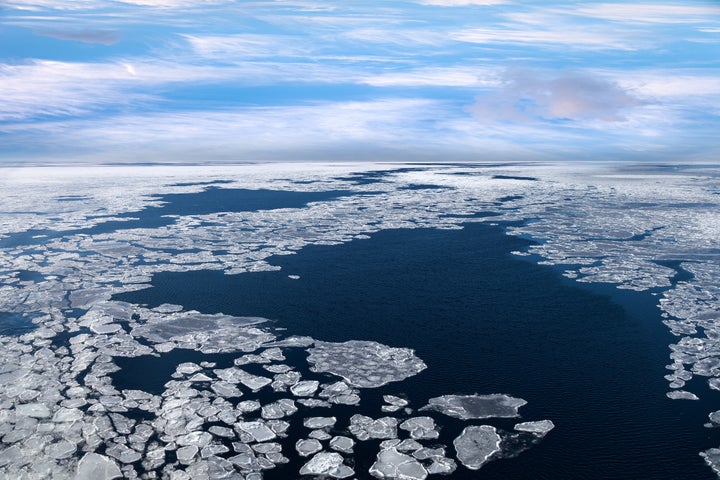Sea ice levels have now reached record lows at both ends of the planet, according to the latest data from NASA.
On 13 February the combined Arctic and Antarctic sea ice figures were at their lowest point since satellites were first deployed to monitor the ever-changing regions back in 1979.
Last month total polar sea ice on earth covered 6.26 million square miles, which is 790,000 square miles less than the average global minimum extent for the period between 1981 and 2010.
This is the equivalent of having lost a chunk of sea ice larger than Mexico.

Walt Meier, a sea ice scientist at NASA, said: “There was a lot of open ocean water and we saw periods of very slow ice growth in late October and into November, because the water had a lot of accumulated heat that had to be dissipated before ice could grow.
“The ice formation got a late start and everything lagged behind ― it was hard for the sea ice cover to catch up.”
Although the North and South pole maintain different seasonal calendars both have ‘maximum’ extents for their floating sea ice - the furthest point that they freeze over every year, before shrinking again.
In the Arctic the maximum extent normally reaches its peak in March, while the Antarctic reaches its maximum in September and minimum in February.
Satellites at both poles recorded sea ice levels in the Arctic reaching a record low wintertime maximum extent on 7 March and summertime ice around Antarctica hitting an all-time-low on 3 March.
The Arctic’s sea ice maximum extent has dropped by an average of 2.8% per decade since 1979, the year they started measuring. The summertime minimum extent losses are nearly five times larger, 13.5% per decade.
And it isn’t just shrinking, it is also getting thinner meaning that it is more susceptible to environmental damage from wind and averse weather conditions.
This is even more worrying because this actually goes against the trend set throughout 2016, which was moving towards more sea ice.
Claire Parkinson, a senior sea ice researcher at Goddard said: “There’s a lot of year-to-year variability in both Arctic and Antarctic sea ice, but overall, until last year, the trends in the Antarctic for every single month were toward more sea ice.
“Last year was stunningly different, with prominent sea ice decreases in the Antarctic. To think that now the Antarctic sea ice extent is actually reaching a record minimum, that’s definitely of interest.”